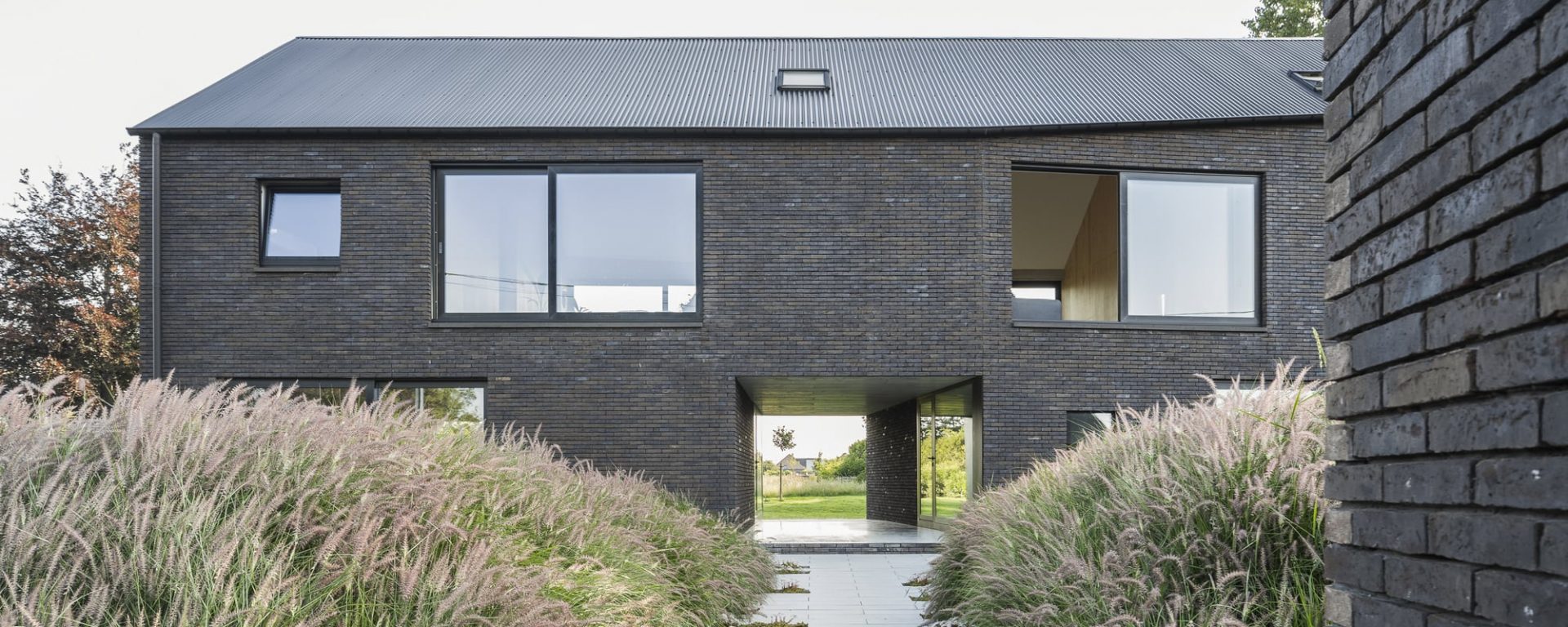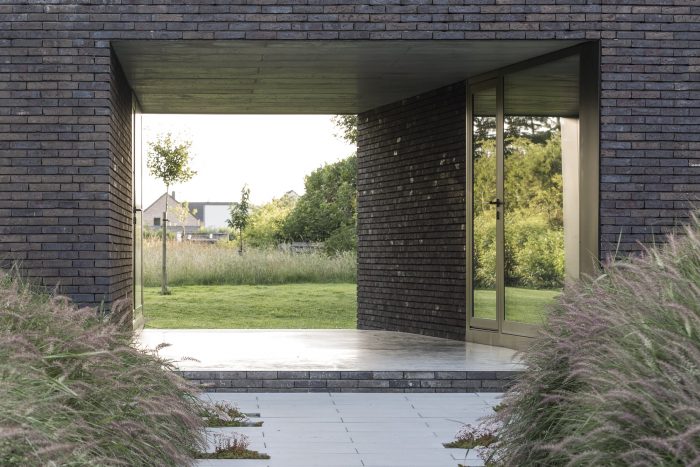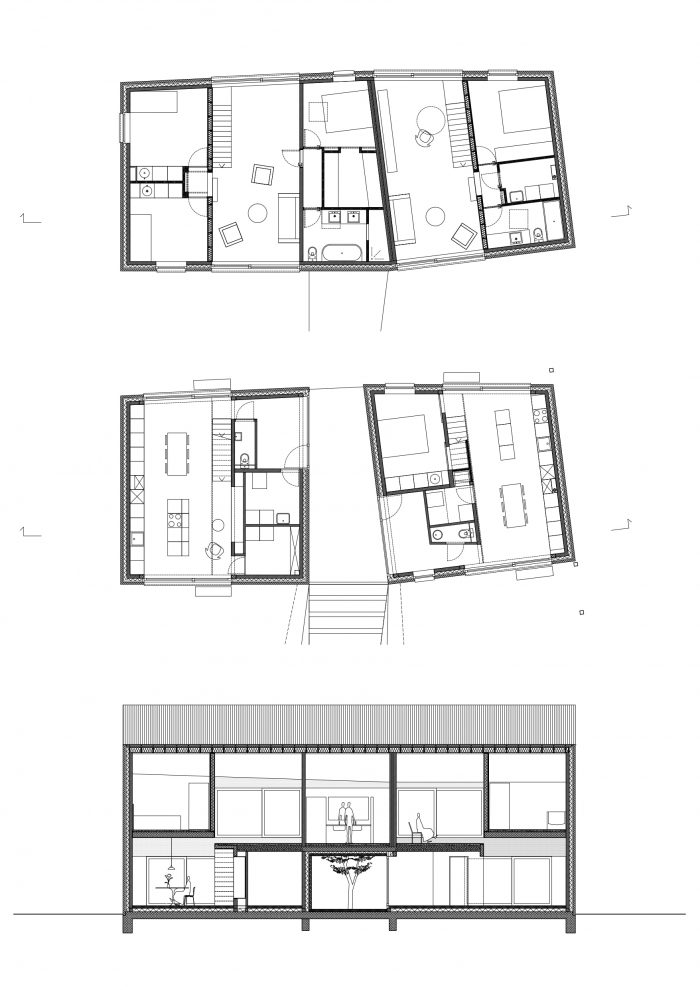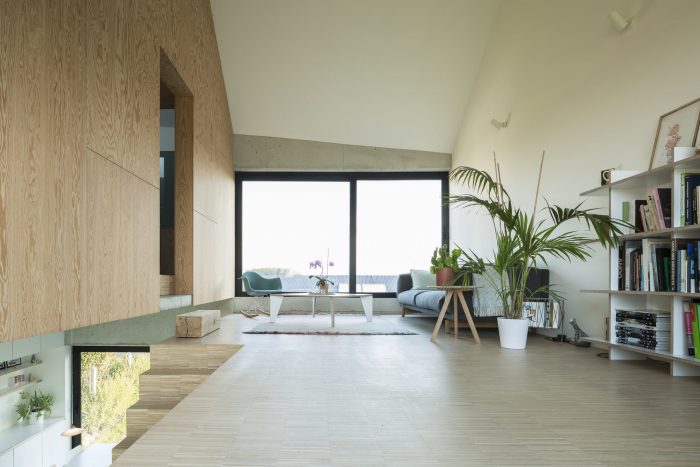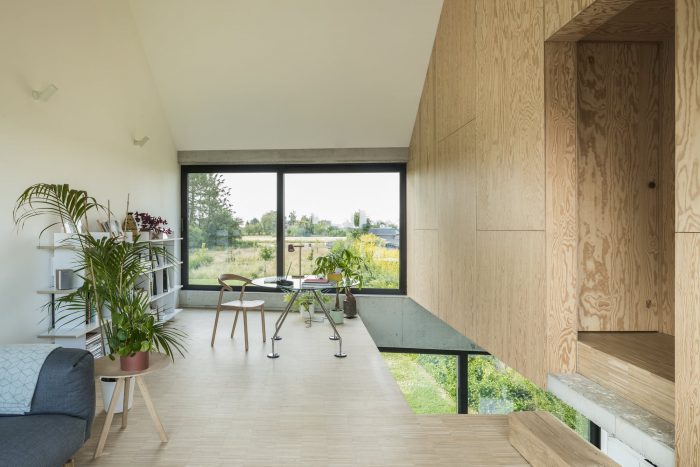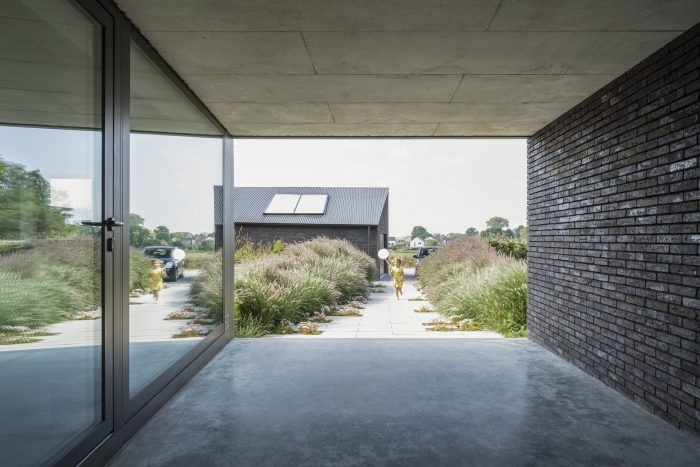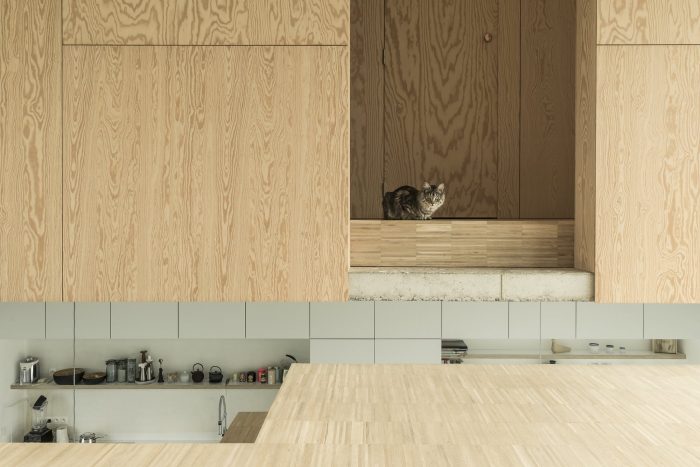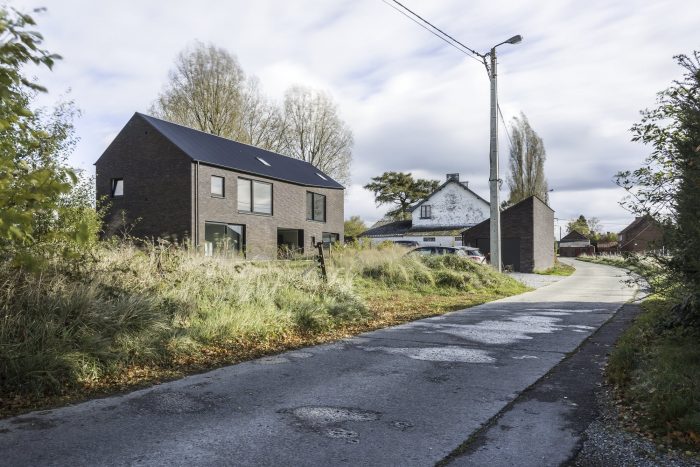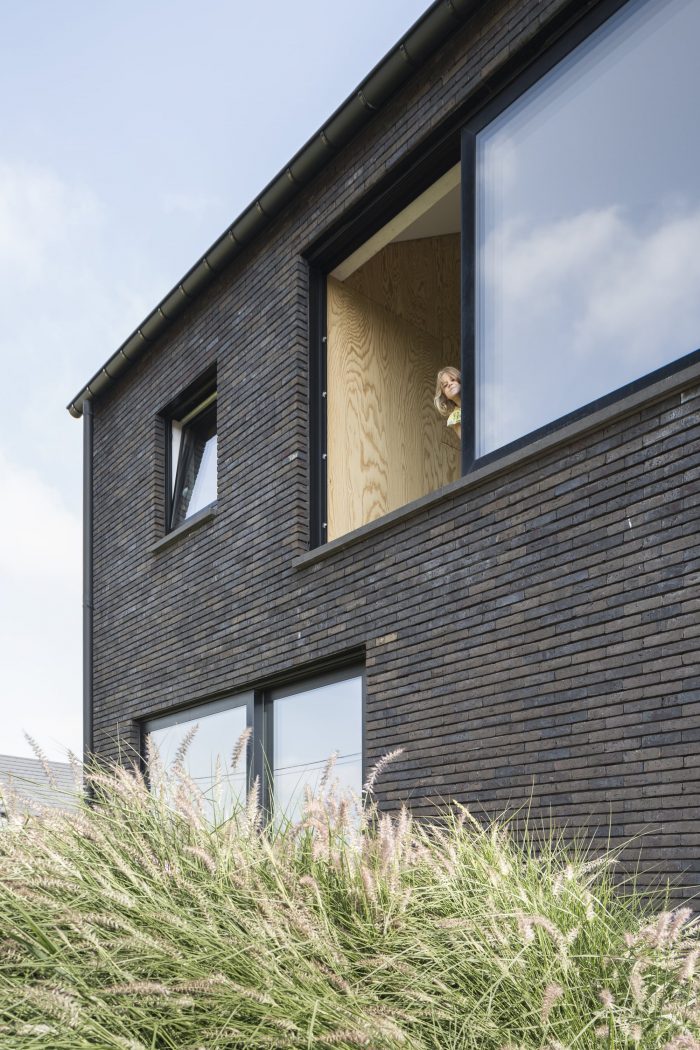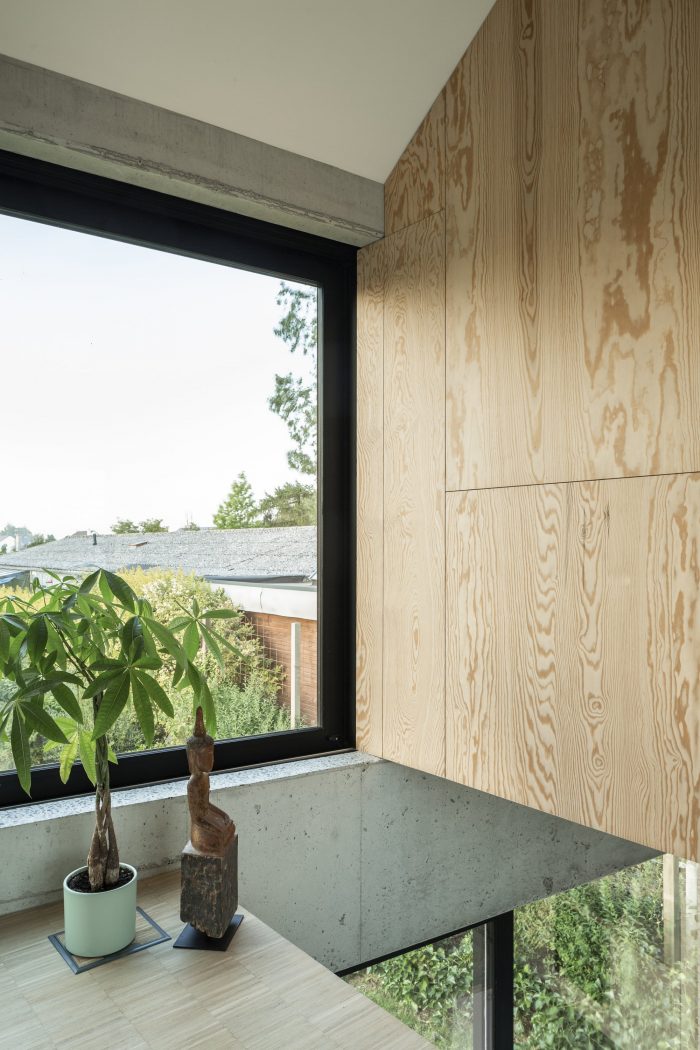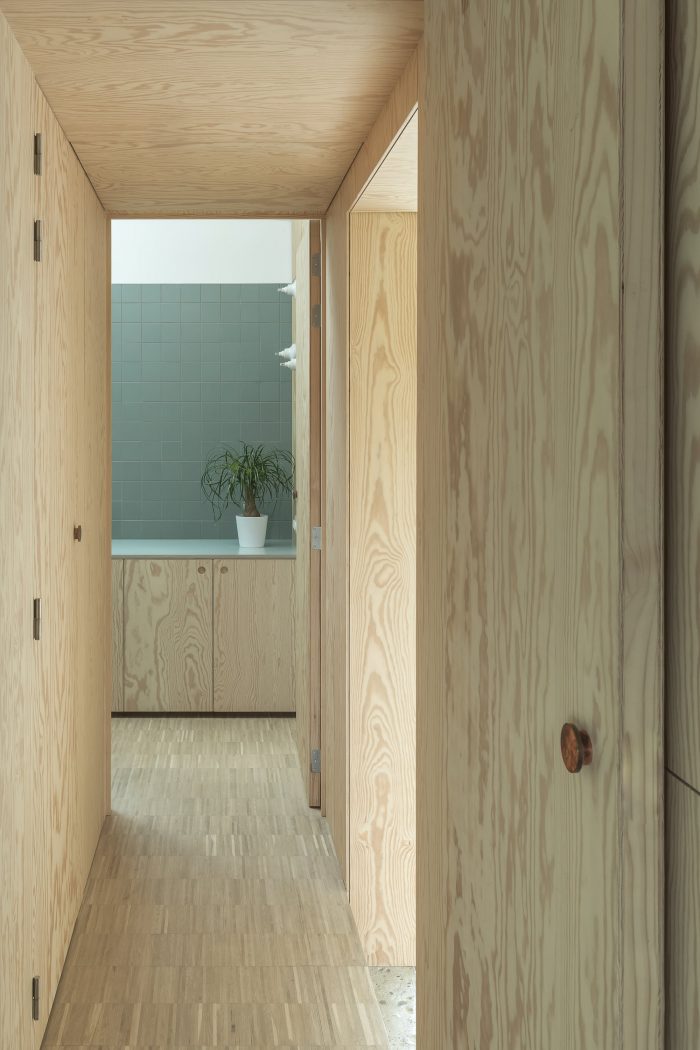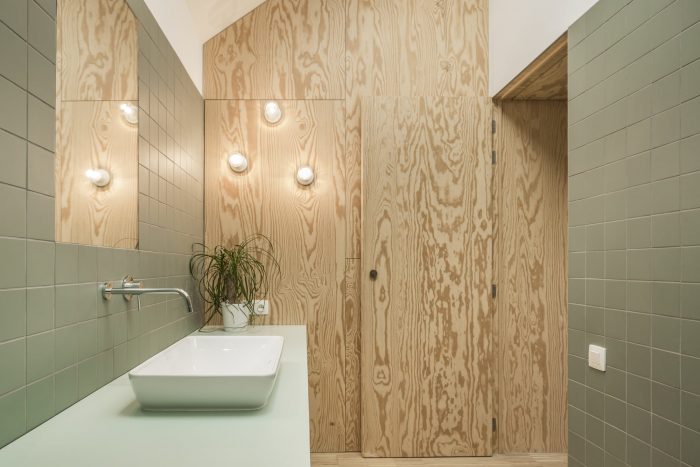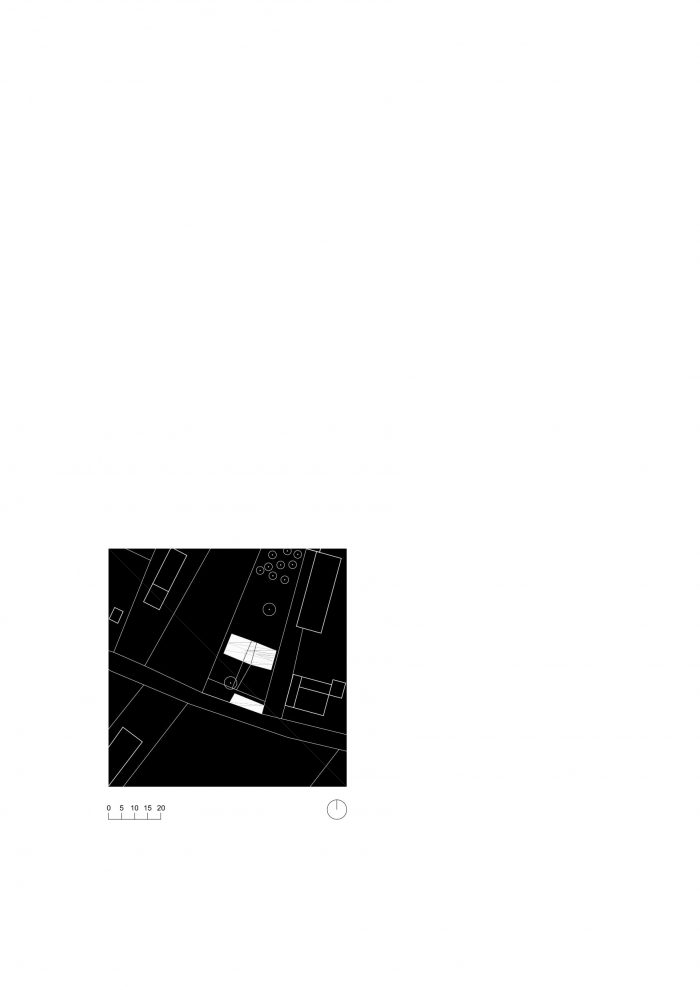一块地,一个容积,两栋房子。我们可以这样总结这个项目,它的特点是为两个家庭提供住房,他们在布拉班特的一个小村庄里共同购买了一块建筑地。
A plot, a volume, two houses. Here is how we could summarize this project which has the particularity of housing two families who bought together a building plot in a small Brabant village.
灵感来自于历史上的农村建筑的植入,也来自于它的体积和材料,BO的房子就像一个巨大的砖块单位体积,从而在景观中赋予了一个强大的和假定的存在。一个位于街道前面的斜面,使两个住宅的建筑可以更靠后地设置。因此,底层生活空间的私密性得到了保证,并为每座住宅创造了私人的前花园空间。在住宅的后面,两个家庭共享一个公共花园、一个果园和一个鸡舍。
Inspired by the historic rural constructions in its implantation but also in its volumetry and its materiality, the house BO expresses itself like a unit volume massive in brick thus conferring a strong and assumed presence in the landscape. A lean-to, located on the street front, allows the building intended for both homes to be set up further back. The privacy of the living spaces on the ground floor is thus ensured and private front garden space for each dwelling is created. At the back of their home, the two families share a common garden, an orchard, and a chicken coop.
灵感来自于历史上的农村建筑的植入,以及它的体积和材料,房子BO就像一个巨大的砖块单位体积,从而在景观中赋予一个强大的和假定的存在。一个位于街道前面的斜面,使两个住宅的建筑可以更靠后地设置。因此,底层生活空间的私密性得到了保证,并为每座住宅创造了私人的前花园空间。在住宅的后面,两个家庭共享一个公共花园、一个果园和一个鸡舍。
Inspired by the historic rural constructions in its implantation but also in its volumetry and its materiality, the house BO expresses itself like a unit volume massive in brick thus conferring a strong and assumed presence in the landscape. A lean-to, located on the street front, allows the building intended for both homes to be set up further back. The privacy of the living spaces on the ground floor is thus ensured and private front garden space for each dwelling is created. At the back of their home, the two families share a common garden, an orchard, and a chicken coop.
在这两座房子里,为了提供景观,生活空间完全交叉,并在两个层面上发展(厨房/饭厅在底层,客厅在R+1)。由于夜间各部分水平的微妙变化,这些都被置于视觉关系中。这给人以巨大的空间感,尽管尺寸缩小了,并允许光线丰富地传播。
Inside the two houses, to offer views of the landscape, the living spaces are completely crossing and developed on two levels (kitchen/dining room on the ground floor and living room on R + 1). These are put in visual relation thanks to a subtle shift of the level of the parts of the night. This gives a great sense of space despite reduced dimensions and allows the light to propagate abundantly.
此外,原材料(混凝土和木材)与景观上的大开口的对比给了空间一个温暖和和平的氛围。外墙的材料性并没有区分2个住房单元,以使单元体积。建筑的整体围护结构是由深棕色的砖块覆盖。屋顶用黑色波纹板覆盖,类似于农场建筑。建筑立面直接表达了通过在起居室的宽度上的完整开口将景观与住宅联系起来的概念。
In addition, the contrast of the raw materials (concrete and wood) associated with the large openings on the landscape gives the spaces a warm and peaceful atmosphere. The materiality of the facades does not distinguish the 2 housing units to make the unit volume. The building’s overall envelope is covered with dark brown brick. The roof is covered with a black corrugated sheet analogous to farm buildings. The façades express directly the concept of linking the landscape with the dwelling via complete openings on the width of the living rooms.
该项目的可持续设计建议利用其朝向,将居住空间向南开放,以便在冬季和季节中期享受 “免费 “热量。在夏天,通过空间向外开放,允许自然通风,以防止过热。 选择砖石和混凝土作为结构系统,可以储存热量,并在不同阶段利用建筑的惯性将其重新投入,以避免过热的高峰。
The sustainable design of the project proposes to take advantage of its orientation to open living spaces to the south so as to enjoy “free” calories in winter and mid-season. In the summer, the through spaces open outwards, allowing natural ventilation to prevent overheating. Choosing masonry and concrete as the structural system allows for storing calories and restituting them in different phases playing with construction’s inertia to avoid overheating peaks.
房屋由地热泵供暖,并与可控的机械通风相结合。房屋的绝缘性能是根据低能耗标准(K 30)定义的,以确保能源优化。这个两组住房的项目为两个家庭提供了机会,使他们能够建造高质量的新住房,并且在经济上可以承受。住房的紧凑性、共享空间的建立、交流和家庭之间的互助使这个项目成为可能。
The house is heated by a geothermic heat pump and combined with controlled mechanical ventilation. The insulation of houses is defined on the basis of the low energy standard (K 30) ensuring energy optimization. This project of two group housing offers the opportunity to two families to build new housing of quality and accessible financially. The compactness of housing, the establishment of shared spaces, the exchange, and the mutual help between the families made this project possible.
Architects: LRARCHITECTES
Area : 307 m²
Year : 2017
Photographs :Maxime Vermeulen
Architecture Design : Laure Bertrand
Landscape Architect : Thomas Van Eeckhout
City : Walhain
Country : Belgium

